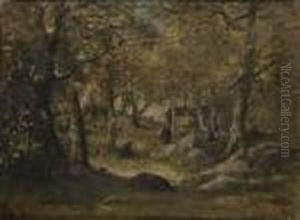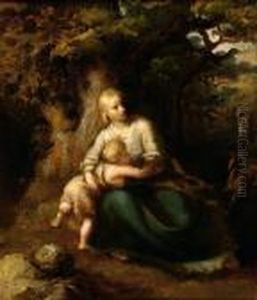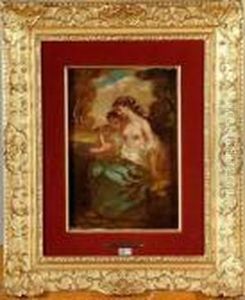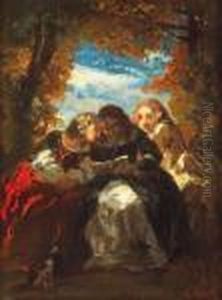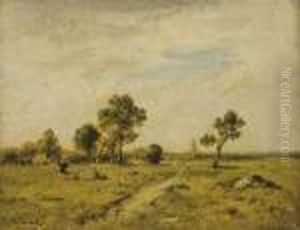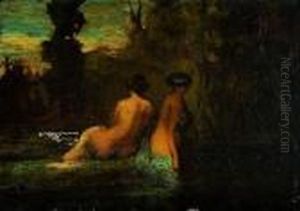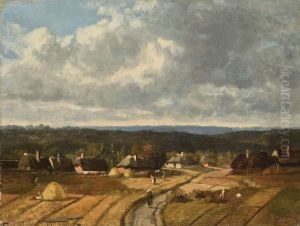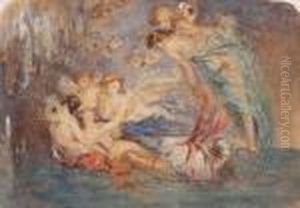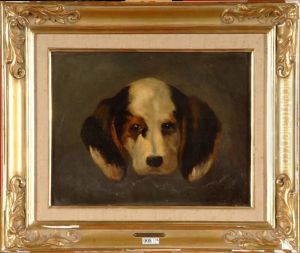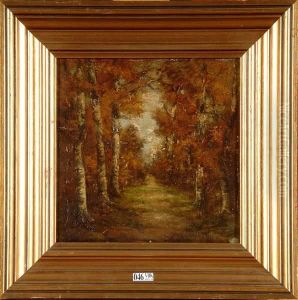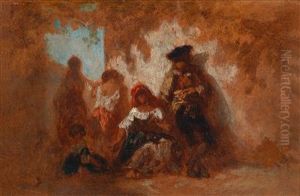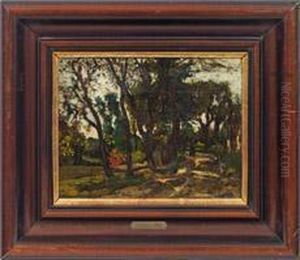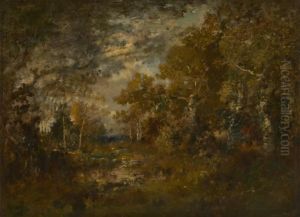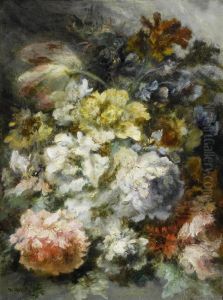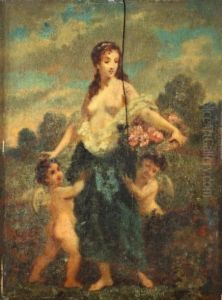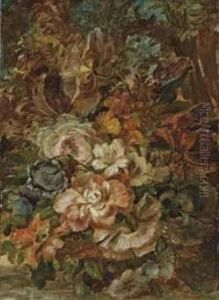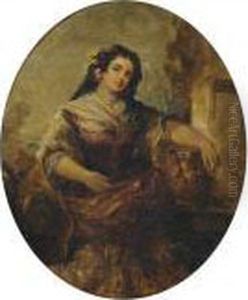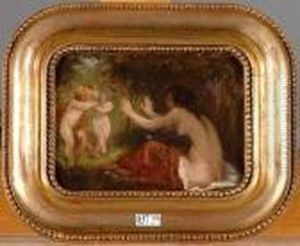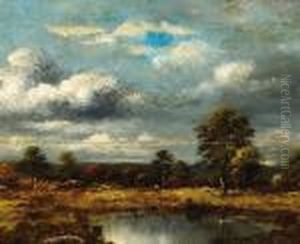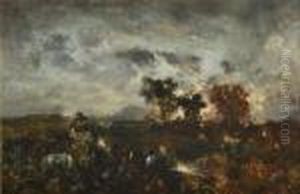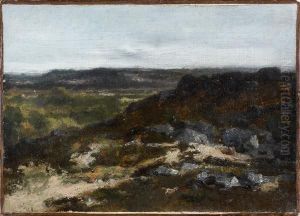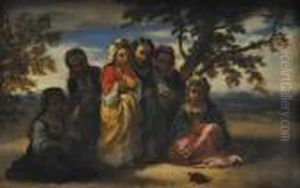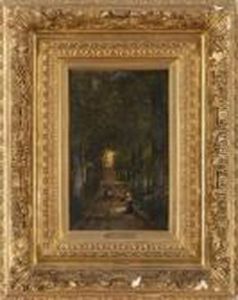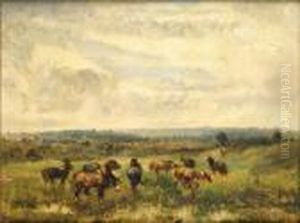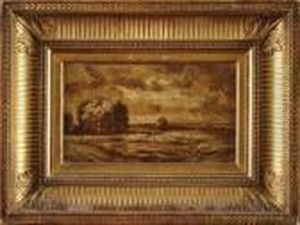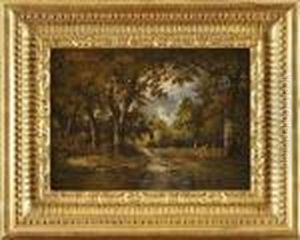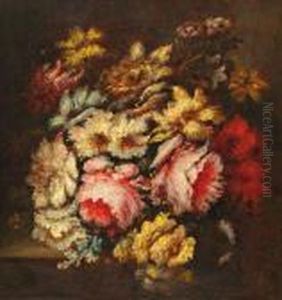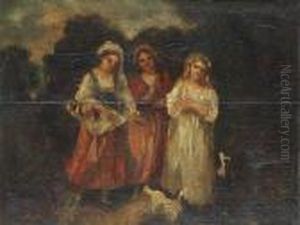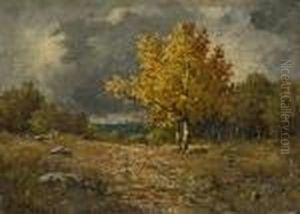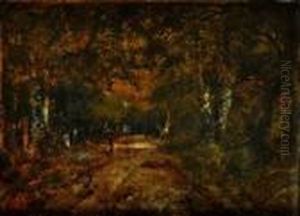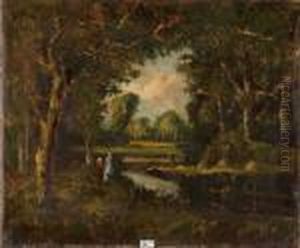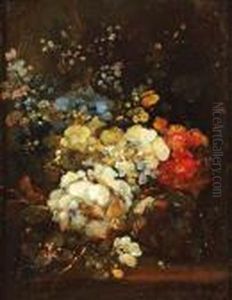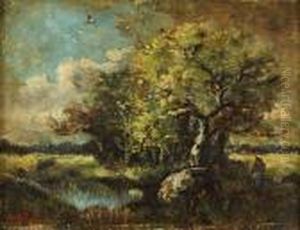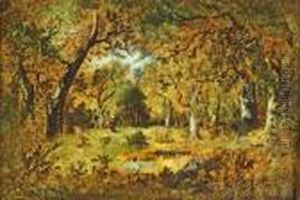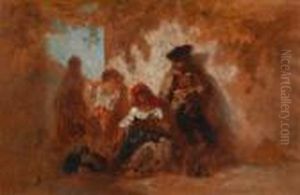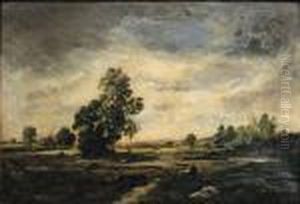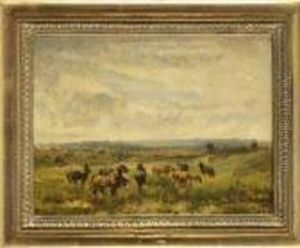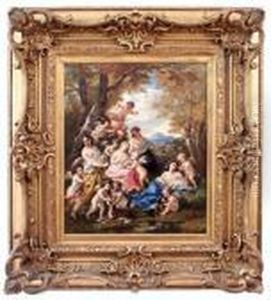Narcisse Virgilio Diaz De La Pena Paintings
Narcisse Virgilio Díaz de la Peña was a French painter of the Barbizon school. He was born on August 20, 1807, in Bordeaux, France, to Spanish parents. After a tragic childhood, which included the death of his parents and a severe foot injury that led to the amputation of his leg, Díaz pursued an artistic career. He initially worked as a porcelain painter before transitioning to oil painting.
Díaz was largely self-taught, drawing inspiration from the works of Romantic painters such as Eugène Delacroix. His early works featured richly colored and dramatic scenes, often with historical or oriental themes. However, his style evolved after being introduced to the Barbizon school, a group of artists who advocated for the realistic and natural portrayal of the landscape.
Settling in the Forest of Fontainebleau, Díaz became enamored with the natural beauty of the area and started to focus on landscape painting. His work is characterized by a bold use of color and light, often highlighting forest scenes with dappled sunlight. Díaz's landscapes became highly prized for their fairy-tale-like quality and their ability to evoke emotion.
Despite his success, Díaz continued to live modestly. He was known to be generous and helped support younger artists, including Claude Monet, by purchasing their works. Díaz became a mentor to many artists who would later become famous in their own right.
Narcisse Virgilio Díaz de la Peña died on November 18, 1876, in Menton, France. Today, his works are displayed in major museums around the world, recognized for their contribution to the development of landscape painting and their influence on the Impressionist movement.
